Peggy's Weather Report from Mica Lake:
*Time: 4:45 pm Temperature: 26.7 C 80.0 F
Humidity: 45.0%
Wind: area blocked from wind Clouds: Altostratus
Cloud Cover: 100% overcast
Light level: off scale *
GPS: Mica Lake:
Latitude: 60.68268 N
Longitude: 148.14483 W
Elevation: 95 m
Water conditions of Mica Lake:
pH: 6.19
Temperature: 15.9 C
Conductivity: 3 microSiemens
I awakened before the others but since my watch quit working, I didn't know what time it was. So I got up and went down to the kitchen tent and decided to work on my journal entries until Caleb and Eric woke up.
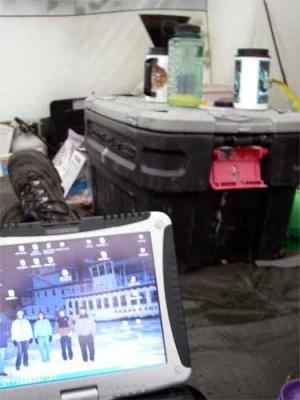
My GPS unit said it was 8:40 am, an hour after the planned wake-up plan, but I knew neither Eric nor Caleb got much sleep the night before since Eric came in at 3 am. We had no set plan for the day, so a delay was not a problem.
There is nothing more relaxing than waking up at a very peaceful remote lake after a very hectic day in the city. Pristine environment, great coffee, good company, and no set schedule, what a great combination. Once we finished breakfast and washed dishes, we were out on the very, very calm lake.
Our task was to find the buoy and pull up the temperature loggers and the sediment traps, one near the bottom and one about 2 meters deep. We used the Secchi disk and measured the clarity of the water at 13 meters. I call that practically transparent! This non-glaciated lake is sooo different from the glaciated ones we had been studying. Remember that it took us about 7 hours to find the buoy at Greyling Lake? Well, guess how long it took us to find the buoy in this lake? We zeroed in on the spot using the GPS unit, and even before we got to the spot, Eric spotted it!!! Nothing to it.
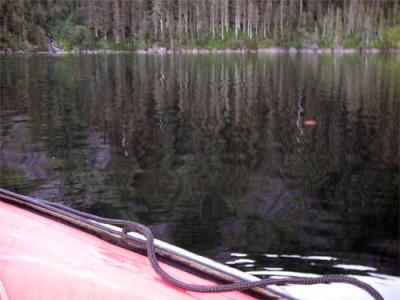
It took a couple of scoops with the poles and chain to pull up the buoy, but this was record time! There were two sediment traps at each depth and one temperatue logger at each depth. Since we did not have the software to check the temperature data, that will be analyzed later.
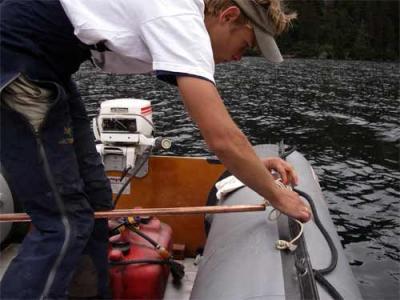
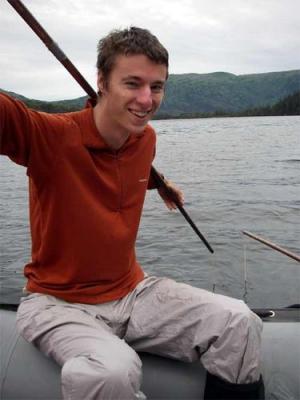

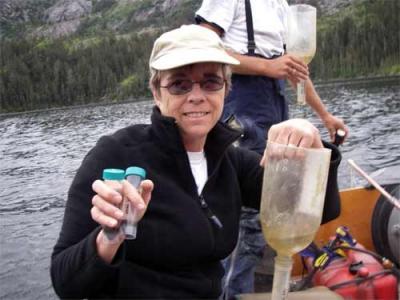
We trolled back to camp and prepared the samples for shipment and prepared new traps and temperature loggers to deploy. There really was no "sediment" in the traps and none was expected. There was no glacial flour here (ground rock created the weight of the glaciers) since glaciers did not feed this lake. There was fluffy organic material in the traps.
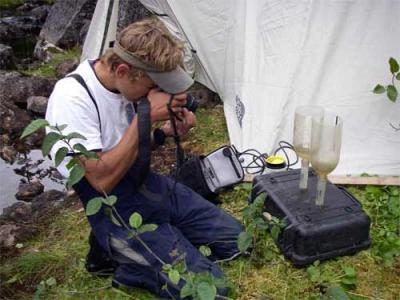
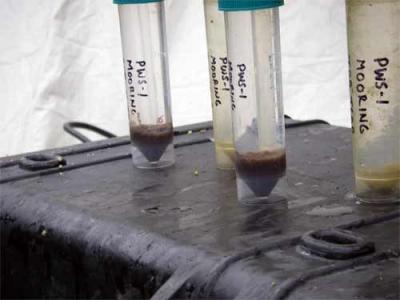
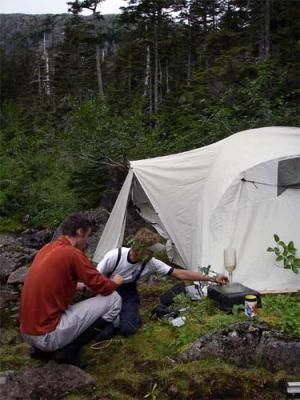
Went back out into the lake and deployed the sed traps and temperature loggers and buoy by attaching them all to a rope attached to a rock. It took awhile to find the proper depth to deploy the rope, but we finally found the right spot and dropped the rock anchor. We came back to the tent for lunch at 1:30 pm. Tuna, veggies, peanut butter, hummus were options to wrap in tortillas with chips.
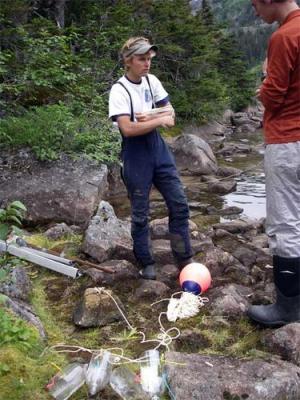
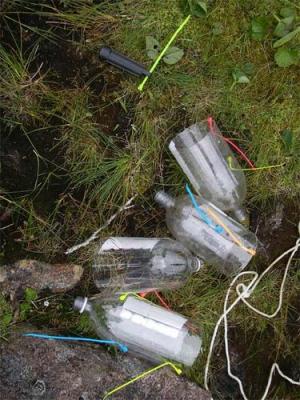
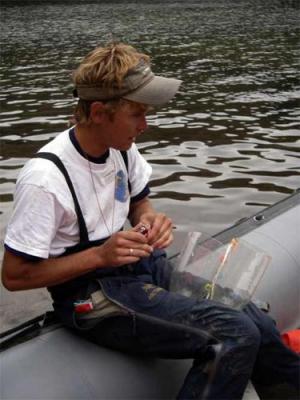
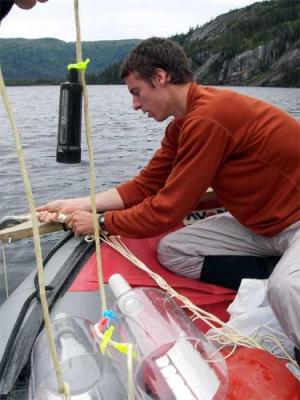
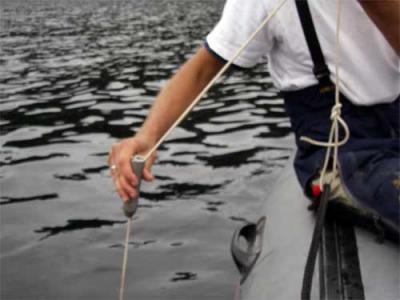
We headed by boat to the end of the lake to check the air termperature sensor. It was there and not damaged by bears. They took the sensor out of the temperature station and uploaded the data onto my computer!
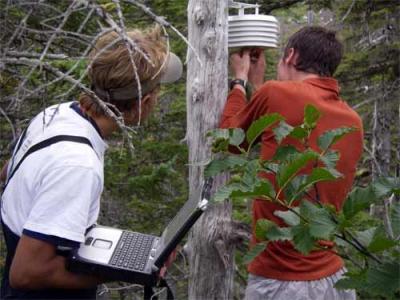
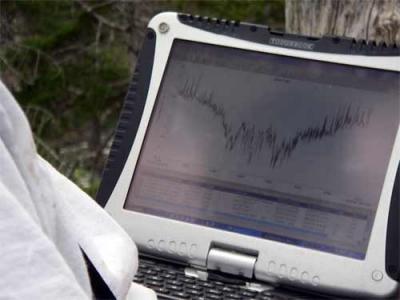
A great temperature record over a year long! While they were resetting the thermometer for another year, I turned a noticed a black bear about 75 meters from me and it was staring at me as I was staring at it. This lasted about 10 seconds and then it left. I called out "I see a bear and it sees me!" Eric and Caleb came running but the bear was gone. I took this picture earlier on my trip at the zoo. The bear I saw took off before I could take a photo.
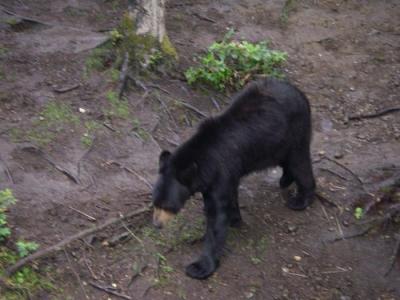
It took off in the direction of our next stop, so we traveled to that location by boat and made sure we made lots of noise and had our shotgun, flare, and spray, as we went to check the outfall of the lake, a gorgeous waterfall down to a smaller lake below. Caleb took water samples and lots of photos to compare with last year. We never did see that bear again, to my relief.
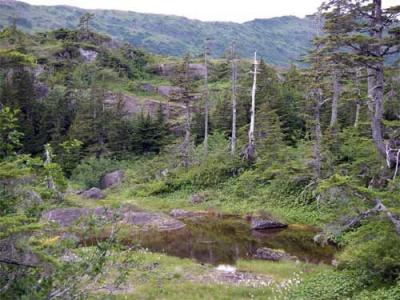

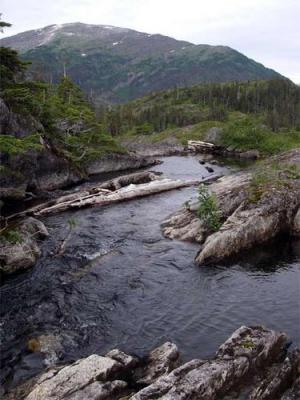
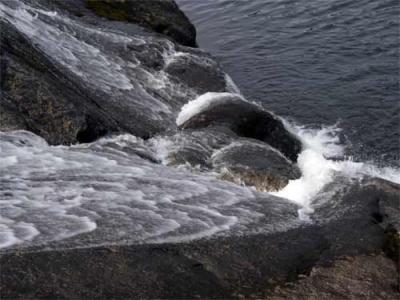
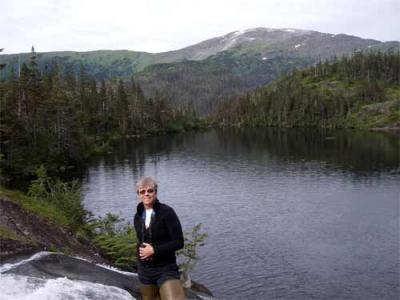
We boated around the lake taking samples at all of the water inlets and photos for comparison. Last year Caleb came here in early July and waterfalls were very active and there was much more wildlife. Now there were very few waterfalls and little wildlife. Water is totally from precipitation, not melting glaciers. There was very little evidence of snow around. It had melted and runoff. The ground cover was soft with water-filled ground cover, foliose lichens, clubmoss, and lots and lots of moss. So a lot of the water was tied up in the vegetation. If you accidently stepped on the ground with your sock on, it became hopelessly soaked, which I experienced. So even though water was not running swiftly in waterfalls, the surrounding area was quite moist.
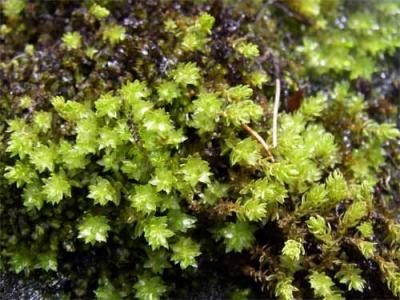
We also spent an hour doing a plankton tow. There were a lot of the red copepods we had seen at Hallet but since diatoms are so much smaller Caleb won't know the quantity we captured until he returns to Flagstaff. Caleb is interested in analyzing the oxygen isotopes in their cases.
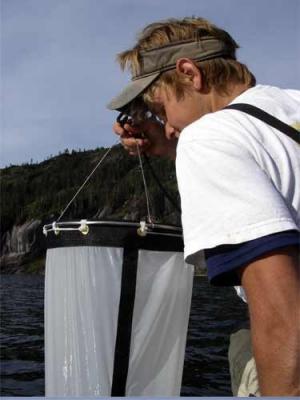
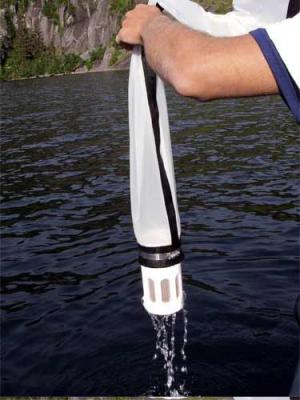
Eric and I kicked back during the one hour plankton tow.
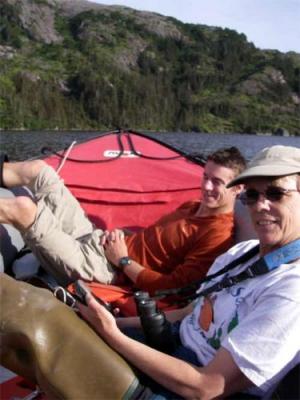
There are more nutrients in the water during spring when the water mixes bringing nutrients up from the bottom which allows the diatoms to thrive or bloom. By this time of summer there are fewer nutrients and diatoms. We came back and bottled the plankton.
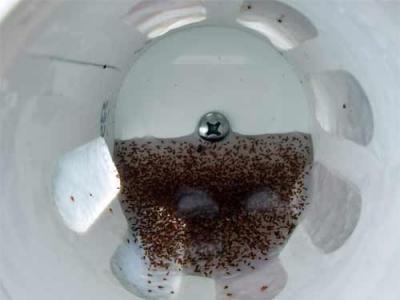
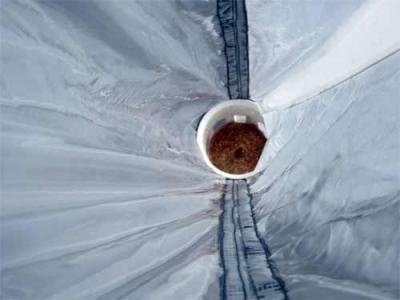
Robin and I posed by the boat.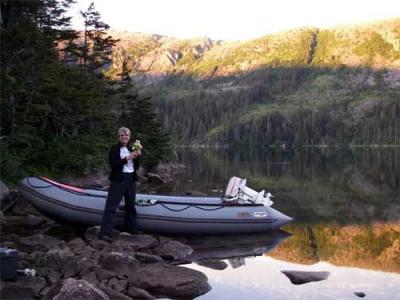
That evening we prepared a delicious meal of curried couscous loaded with colorful, delicious vegetables. One thing we have each evening is a piece of chocolate after dinner. What a treat that is. After cleanup and evening discussions about the day and the meaning of the data, bedtime was the typical 10:30 pm.

